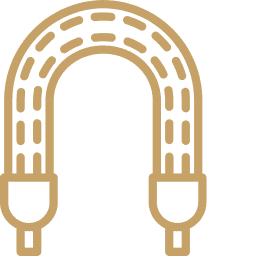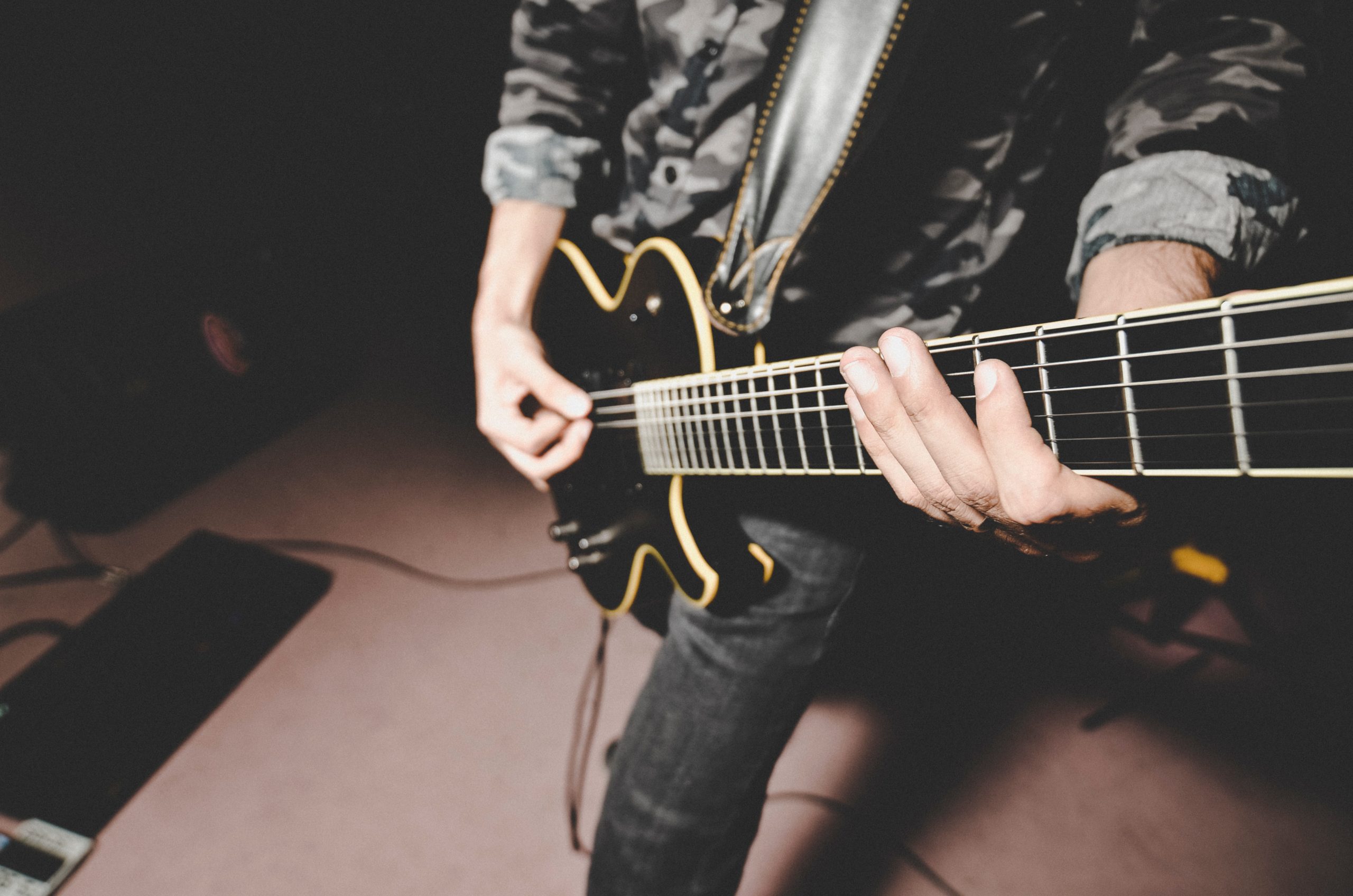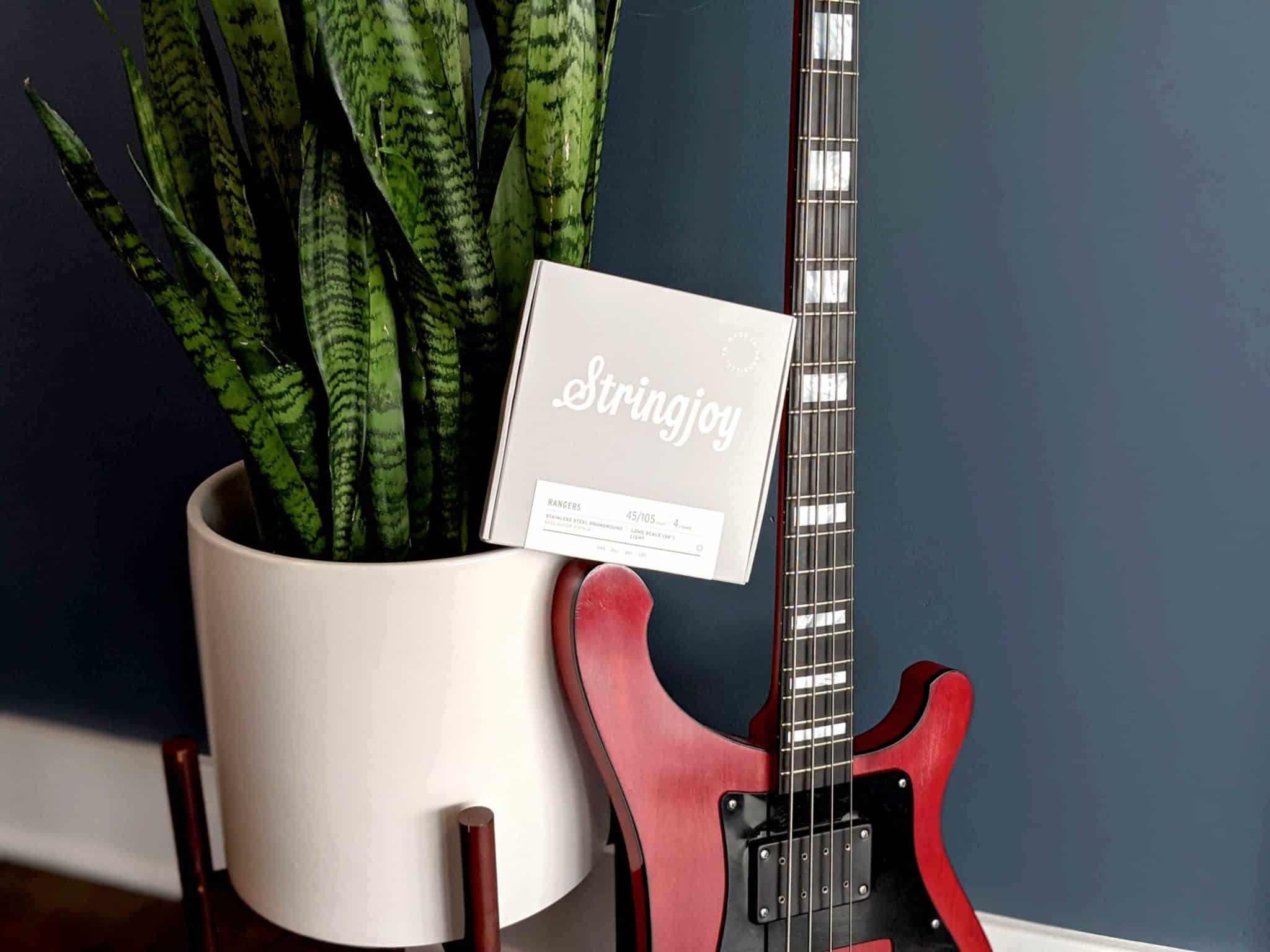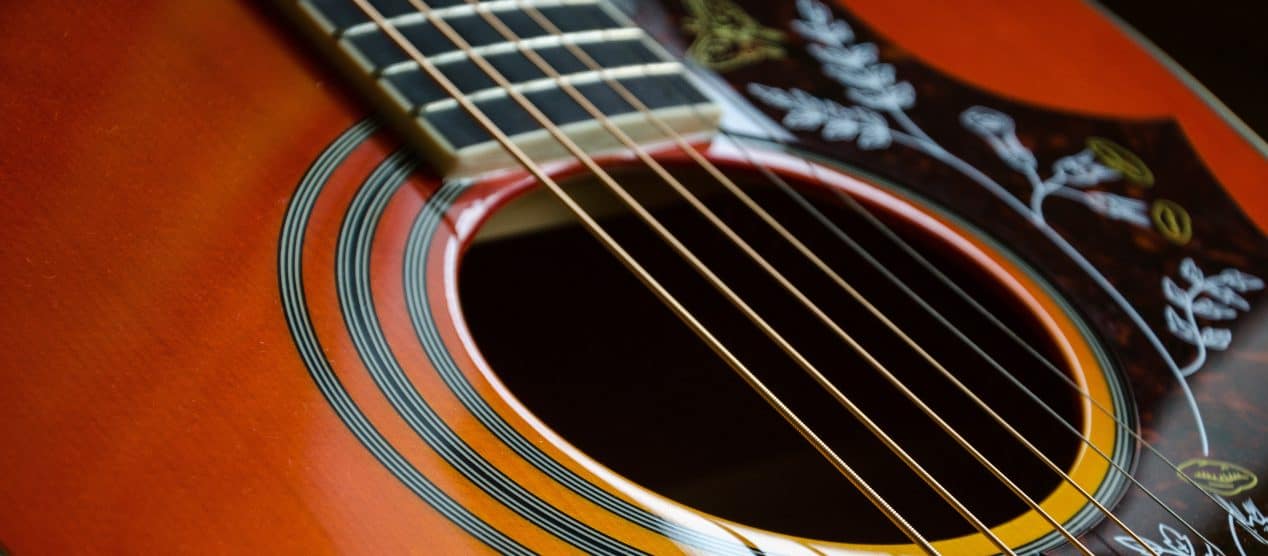Wound G strings—or wound 3rd strings—used to be in nearly every electric guitar string set available, but not so much these days. Why is that, and what can a wound g string do for you that a plain string can’t? Let’s find out:
Be sure to subscribe to our YouTube channel to keep up with more great videos like this one:
Transcription
If you’ve been playing guitar for long, you’ve probably seen a lot of different sets of strings, and you’ve probably noticed that a few things are always the same, no matter what. Most notably, the first and second strings in the set are almost always plain steel. The fourth, fifth, and sixth strings, or seventh or eighth strings if you play extended range guitars, are almost always wound. But when it comes to the third string in the set, things get a little bit interesting…
If you’ve been playing 9s or 10s your entire playing career, you’ve probably only ever really seen plain third strings. But, if you’ve been playing 11s or 12s or jazz-specific sets, you’re probably used to seeing wound third strings.
So, why do some sets have wound third strings and some sets have plain third strings? Is there any advantage to a wound third string that you could consider in any gauge set that you like to play? Well, today, we’re going to dive into that and hopefully answer all those questions for you.
The first thing we should talk about is why wound strings are used in the first place. In theory, you can make a 46 gauge low-E plain string. Heck, you could use plain strings all across the guitar. The issue is that it wouldn’t play very well and it wouldn’t sound very good, either.
When it comes to flexibility, plain steel strings have less flexibility than a wound string of the same gauge, so those very, very heavy plain steel strings on your hypothetical all plain steel Strat would be really, really hard to bend. Second of all, they just wouldn’t sound very good. When you get that thick of a diameter plain steel string, it’s going to have a very shrill and overpowering tone that just wouldn’t blend in with the rest of the set.
So, wound strings are great for all of these reasons. The geometry of wound strings enables you to have less mass at the same gauge, meaning more flexibility, and on top of that, you can use other alloys in the string, like nickel in a wrap wire, which wouldn’t be strong enough on its own as a plain string, but works great in the context of a wrap. This helps to kind of smooth out and balance out the tonality of your guitar overall.
Why don’t we use wound strings in all guitar string sets? Well, interestingly enough, there was a time that that was the case. Back in the 40s and the 50s, and even into the early 60s, all electric guitar string sets that you could really find standard were basically acoustic guitar string sets with acoustic guitar string gauges. Think 12s or 13s, and a wound third, going all the way down to a very heavy bottom end, a 52, 54, or a 56. This is because the playing of the electric guitar hadn’t really started to change that much until you had people like Chuck Berry really starting to play it in a very different way. They were thought to just be an amplified acoustic guitar, so why would you need anything different?
Well, in the 60s, players started to really explore all the different things you could do with the instrument, most notably, bending strings and using a lot of vibrato while they’re playing. Naturally, when they were doing that, they figured out that those 12s and 13s were a little bit prohibitive, so players started taking those sets of 12s and 13s, moving all the strings down one notch, and then trying to get a really thin top string, like from a banjo set, or something like that, so that they could have a set of 9s or a set of 10s, and be able to really bend them.
This was the first time that we really saw plain steel third strings in traditional electric guitar string sets, and its advantage is pretty obvious. It’s a lot easier to bend a thin, plain string than a much heavier wound string, like a 24 or a 26.
So, eventually, after these players had shown them the way, a lot of the big guitar string companies started putting out plain 3rd sets, with top gauges like 9 and 10, or even 11, a lot of the stuff that you see on shelves today. But, in the process of this, the wound third has kind of fallen by the wayside. It’s still standard in jazz sets, or sets that go 12 or 13 at the very top gauge, but you really don’t see it too often in lighter gauge sets.
So, I think this is a shame, because there’s a lot of good things about a wound third. The two issues I’ve always had with my third string on almost all of my guitars is first of all, it doesn’t really sit right in the mix when it’s playing. It always really stands out, because you have a very heavy diameter plain steel string that really stands out when I strum just a chord or I’m playing anything in the mix. The second is that I have a lot of tuning stability issues on both Fender style and Gibson style guitars. The G always seems to be the weak spot that’s really hard to intonate and really hard to keep in tune.
The very first time I ever put a wound string onto one of my guitars, it was a 335 that I used to play a lot a few years ago, I was blown away, because it solved both of those problems that I had thought were just standard guitar problems you couldn’t get away from. Everything intonated a lot better, and above all, it sounded really, really smooth.
But, that’s not to say that there weren’t some trade offs. The biggest one being that a heavy wound third … I think, back then I was using an 11 gauge jazz set that probably had a 22 wound third? Something like that. It’s not very flexible. It’s not very bendable, especially compared to an 18 plain that you would see in a regular set of 11s. I had to adjust my play style at first to get used to that wound third, and that meant a lot less bending at the third position, but fortunately, eventually, I figured out that there was a way to get a lot of the benefits of a wound third without all those huge drawbacks.
The secret comes to using a lighter gauge string than what you typically find in your traditional wound third string sets. So, an issue kind of arises for guitar string manufacturers once they get to wound third sets. Typically, your plain strings will have a few pounds less tension than your wound strings, for a couple reasons we’ll get into in a different video. The question then becomes when you switch that third string from plain to wound, do you want to balance it out with the plain strings, like it used to be, or balance it out with the wound strings?
Typically, most companies will balance it out with the other wound strings in the set, which gives you a pretty heavy and fairly inflexible wound third. What I like to do is, instead, balance it more with the plain strings, or right in between the plain strings and the wound strings.
What does this look like in practice? Well, let’s take a set of 11s, for example. On a typical set of 11s with a plain third, you’ll see an 18P, P standing for plain there. If we want to switch that for a wound string, most companies will use a 22 wound, or even a 24 wound, which is a really, really heavy third string. You’re not going to be able to bend it hardly at all. What I would recommend doing is using a 20 wound. It gives you just the right mix of tension between your plain steel strings and your other wound strings, while enabling you to bend quite a bit more than you ever would be used to on a typical wound third string set.
Similarly, if you’re using a set of 10s, I recommend using an 18 wound in place of the regular 17 plain. Both of these substitutions, and others for different gauges, go a long way to ensuring that you get all those benefits of a wound third, that tuning stability, the really nice sound and full resonance inside of a chord, but you’re not sacrificing your playability.
If you want to try out a wound third for yourself, if you, like me, feel like you have a lot of tuning issues on your third string, or just don’t think it ever really sounds just right, the easiest thing to do would be to keep the same gauges that you’re used to, say, 10, 13-1/2, and 17 on a set of 10s, and then substitute a slightly higher gauge for that third string and go to wound, so 10, 13-1/2, 18 wound instead of 17 plain, or a 20 wound instead of an 18 plain for a set of 11s. This will go a long way to show you all the advantages that you can get for wound thirds, without making things too difficult in terms of playability.
Bonus info. I’ll get a lot of people that will ask me why the lightest gauge wound string they can typically find is an 18? For us, it’s an 18. I think some companies might make a 17, but generally, the reason here is that when you imagine a wound string, there’s a core wire that runs through the middle of it, and then a wrap wired that goes around it, and they all combine to get you that total diameter of the string.
The issue is, you have to use a very thin core wire on a string that’s going to get to 18. So, even an 18 isn’t the most durable string you’ll ever find, but as you get even lower than that, you’d have to use a really, really thin core wire, which would cause a lot of breakage when used in that position, so for that reason, the lightest gauge string you can ever really find and consistently rely on is probably an 18, in my opinion.
What do you think? Has this video inspired you to try a wound third for the first time? Have you been playing them for years and swear by them, or would you never touch one? Let us know down in the comments.
Also, if you do want to try a wound third string for the first time, or you’ve never been satisfied with how heavy of gauges you have to go to to get a wound third, you should check out our shop. All of our electric sets of strings are fully customizable, so you can change the third string to a wound string on any of our sets, won’t cost you one cent more.









17 Responses
Thinner Wound Strings than 18w have to be treated as if they were made out of sheep gut because they have to stretch.
With really thin Wound Strings (e.g. the 16w from the Dragao D53 string set) they need to reinforce the core & wrap wire.
I found a Guitar string set from Dragão that has a Flexible Wound G at a .016w gauge & it’s super strong thanks to it’s reinforced Core & Wrap Wire design. They have a Flex-Hex Core (it’s a Hex-Core that’s been formulated to allow for the same amount of flexibility as a round core while retaining its tuning stability) which is something new. I never had issues w/ the 16w gauge G string breaking but the company suggests tuning these strings down a half step to Eb Standard so that it would last longer.
We have more advanced technology that means we can make a Flexible Wound G that you can do bends on like a plain g combined w/ the improved tuning stability, what would distinguish them is the Flex-Hex Core. I never had issues w/ the 18w gauge string breaking (as well as the thinner wound strings 17w, etc.) because those have a special reinforced Core & Wrap Wire design.
Thanks for your video. You are exactly correct. I’ve been using a 3rd (G) wound string on my electric guitar (335) for ever since I can remember! The tone is so much better and it fills so much more than an unwound G. Also, the unwound is so twangy and hard to keep tuned. It always sounds out of tune no matter if you are spot on with your tuner or ear!!! The only problem today is that I cannot find a wound string in any set. I use 10 gauge and always have on my Gibson 335. Where do I find those strings. I wanted to buy extra strings in singles and cannot find them! My usual trick is to buy a set of 10’s and buy single wound G’s (3rd) strings. Replace the unwound with a wound “G”. I have been playing since I was 14 and have been playing over 60 years!
Great video. Very informative. Haven’t played in years, back with 3rd strings were wound, and wondered what the heck happen! Thanks for bringing me up to date.
Thank you very much for your information.
Really informative write up there. I received my first order of strings from you a couple of weeks ago. I put a set of your 11’s with a wound 3rd (18w) on my modded P90 Jaguarillo and it was like the final piece of the puzzle was put in place. I have tried several different brands of strings on this particular guitar over several years but as of right now I would say I like the feel and sound I am getting out of the StringJoys above any of the other brands. They do imo play a little cleaner which on this style of Fender is always a consideration. The feel under my fingers is very good and the tone is very solid and clear. The G string always seemed a little fuzzy / fizzy but your set seems to have cleared that up.
Thanks for a good product.
Hi I’ve got the same problem. I want to get the lightest wound g I can find. any suggestions?
Sure thing! You’ll want to build a custom set of our strings with a .018w on the 3rd.
Great article with a lot of information. It might not be a bad idea to mention that if a player is going to switch from a plain G to a wound G, he’s going to want to reset his intonation! The wound string needs to be shorter in order to intonate properly.
Great point John!
I’ve been meaning to try a set of 11s with a wound 18. My LGS guy told me my bridge (it’s a carved wooden bridge on an old Speed Demon I recently acquired) was designed for better intonation with wound. Question about tension: Is it higher simply because of the diameter, or because it’s wound?
Great question Dave! A wound .018 will have higher tension than a plain .017, but not a plain .018. Wound strings have less tension than plain strings at the same diameter due to there being less mass in a .018″ diameter wound string than a .018″ diameter plain steel string.
Thanks for video on 3rd wound. I been playing for 50 years and I like 3rd string wound but hard to find. I like a light gauge 9 42 but I want a third wound is that possible. I’m old school a ph. # you can call to order . I’m interested in your strings and your picks. Please help me!!
Sent you an email!
How about a 17w from D’addario or even so an Eagle Music 16w? To make the Wound G String flexible I’d suggest maybe either tuning the strings down a step or putting them on a guitar w/ a shorter scale length like maybe a 19 inch scale mini strat.